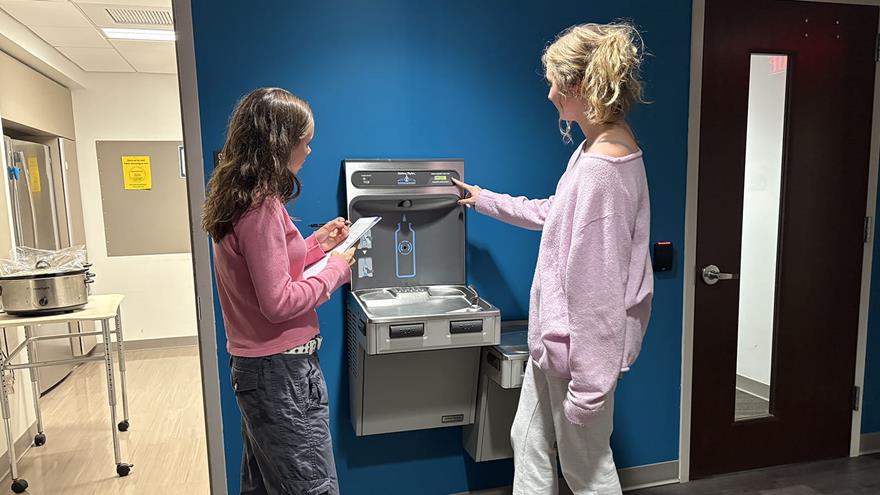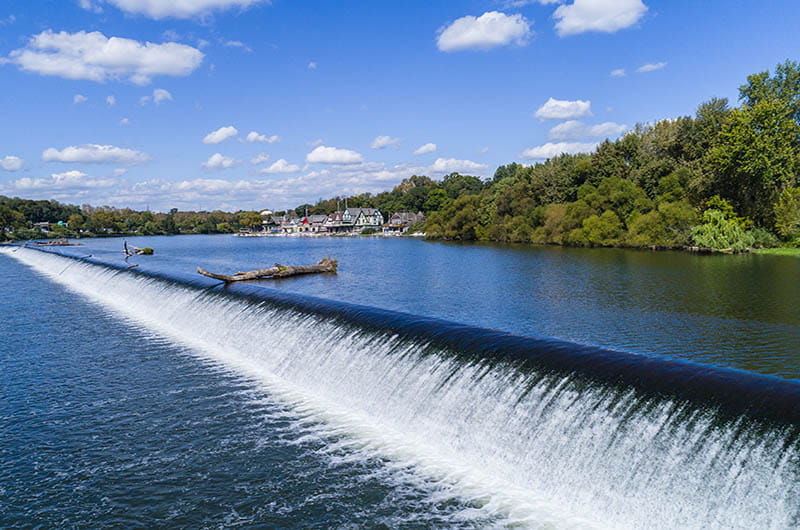Spurred by the Pandemic, a Renewed Call to Protect the City’s Waterways

- Drexel’s Hydration Stations Cut Plastic Waste and Costs
- Philadelphia Films With Drexel University Cameos
- Drexel University Receives Higher Education Excellence and Distinction (HEED) Award for Its Culture of Belonging
- New Research Recommendations for Supporting Autistic Adults to Ensure Their Communication Success

The following essay was originally published in The Philadelphia Inquirer in collaboration with Drexel University’s Lindy Institute for Urban Innovation as part of Rebuilding Philly, a series of commentary articles written by Drexel faculty and professional staff related to the COVID-19 pandemic and racial and economic equity gaps in Philadelphia. It was written by Roland Wall, the director of the Patrick Center for Environmental Research at the Academy of Natural Sciences of Drexel University.
The character and culture of Philadelphia have always been linked to water. The rivers that gird the city are our gateway to the world, a source of drinking water, and, paradoxically, a site for waste disposal.
In the late 18th century, Philadelphia was beset with repeated yellow fever outbreaks, at the same time its drinking water was hopelessly contaminated with things like chalk and saltpeter. It would eventually be learned that yellow fever is not caused by dirty water, but in the early 1800s, a sense of a diseased city with undrinkable water spurred the local government to develop the nation’s first public water system.
It’s been said that all cities are “nature reconfigured,” and the pumps at Fairmount Waterworks, which were designed in 1812, were the start of a Herculean process that “reconfigured” Philadelphia’s natural waterways. With countless miles of pipes, tunnels, and storm sewers, the watersheds of the city have been relentlessly converted for centuries to serve human needs.
Over time, with the introduction of filtration, chlorination, and extensive new piping, Philadelphia became what British geographer Matthew Gandy has labeled a ”Bacteriological City.”
The result was clean, healthy water delivered daily to one of America’s largest cities, arguably one of the great engineering triumphs of the early 20th century. However, the Bacteriological City was a two-edged sword. Safe drinking water obscured the need to protect environmental health.
The repulsive conditions of water in the Schuylkill and the Delaware were the stuff of legend by the mid-20th century. Only with the growing environmental awareness of the 1970s and the passage of the Clean Water Act did the conditions of Philadelphia’s streams and rivers begin to be treated as elemental to the city’s overall health.
Now we are at another inflection point in how the city relates to its urban waters — and this pivotal moment, as with yellow fever in centuries past, is also defined by a public health crisis. The hydrological system is being stressed in ways that are both more subtle and more lasting than the flushes of sewage and industrial waste. The lesson from history is that we cannot ignore any of the parts of that system.
Some of the newer stressors are specific to Philly. The products of urban runoff and the legacy of combined sewer outflows leave many of the city’s streams impaired. Abandoned industrial sites continue to endanger groundwater, and some communities are plagued with aging plumbing or recurrent floods.
Beyond our homegrown water stresses, there are global forces that endanger the resilience of water in Philadelphia. Climate change is making our city hotter and wetter, our storms more severe, our rivers flood higher. Interwoven with climate crises, we have crises of equity and racial justice, because we know that environmental risks disproportionately affect Black and brown communities. Where water resilience is threatened, it will inevitably be the most vulnerable — poor and people of color — who will suffer most.
The pioneering environmentalist Aldo Leopold urged us to “think like a mountain,” to see ourselves as part of a greater whole. For Philadelphia, I would urge that we “think like a watershed,” to grow from a Bacteriological City to an “Ecological City,” mindful of the intricate human and natural connections that link the greater water system. As the 21st century churns on, we would do well to remember that it is the whole system that gives life to our city, and that it can never be taken for granted.
In This Article
Drexel News is produced by
University Marketing and Communications.